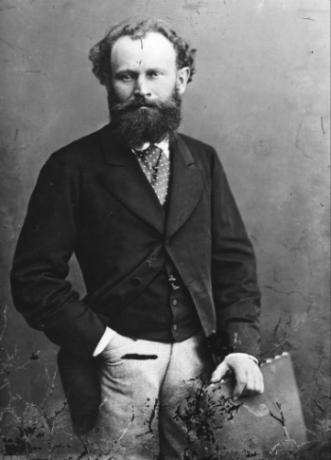Donatello he was one of the most prominent artists of the Italian Cultural Renaissance period, alongside Leonardo da Vinci, Michelangelo and Rafael Sanzio.
Donatello Biography
Born Donato di Niccoló di Betto Bardi, better known by his stage name Donatello, the artist was born around 1386 in Florence, Italy.

When he was approximately 17 years old, he carved his first sculpture in marble and, at the age of 20, he was already receiving commissions for his work.
He practiced his profession as a sculptor in several Italian cities, from where we can still appreciate his work today: Florence, Rome, Naples, Siena and Padua.
From his work, he acquired great fame in the Renaissance period considered the most important Florentine sculptor of the 15th century.
Furthermore, his name is attributed to the foundation of modern sculpture being one of the most brilliant sculptors in mankind.
In the years of art studies, he was influenced by masters like the Renaissance sculptors Filippo Brunelleschi (1377-1446), with whom he traveled to Rome in 1407 to study classical art, and Lorenzo Ghiberti (1378-1455).
For 3 years he was a disciple of Ghiberti in his art workshop, helping with the work done on the bronze doors of the Baptistry in Florence (1404-1407).
It is worth noting that the politician, banker and art lover Cosimo de Medici (1389-1464), was the Maecenas (Patrono das Artes) who financed some of Donatello's works, including the bronze statue of David.
He died on December 13, 1466, in his hometown, being buried in the Basilica of St. Lawrence, alongside his patron: Cosimo de Medici.
Main Works
Marked by harmony, proportionality, dynamism and delicacy, Donatello's works have different characteristics: classic, Gothic and humanist, with realistic tendencies.
In this way, he was considered a great innovator of artistic techniques (of which and highlights the “Bas-relief”) and for the composition of his structures, he used various materials, such as marble, bronze, wood. His main sculptures are:
- Habacuc
- David
- Saint Mark
- Saint George
- St. John the Evangelist
- St. Ludovico in Tolosa
- Maria Madalena
- St. George's Tabernacle
- Tabernacle of the Sacrament
- prophets
- Cattamelata
- The Feast of Herod
- Judith and Holofernes
Artistic Stages
When analyzing Donatello's works, it becomes evident that artistic trends have been changing throughout his life, being therefore classified into three moments.
In the initial phase of your work, traces of the gothic art appears in his works as in "John the Evangelist”, “Saint Mark" and "Saint George”.
Therefore, in his second artistic phase, the classical trend becomes his main characteristic, figured in his most outstanding work: the life-size bronze statue of “David” (1430).

Finally, in its last phase, the presence of characteristics of realist art is notorious, which accurately shows the faces and positions of the bodies, as in his equestrian statue in bronze: "Cattamelata” (1447-1453).



